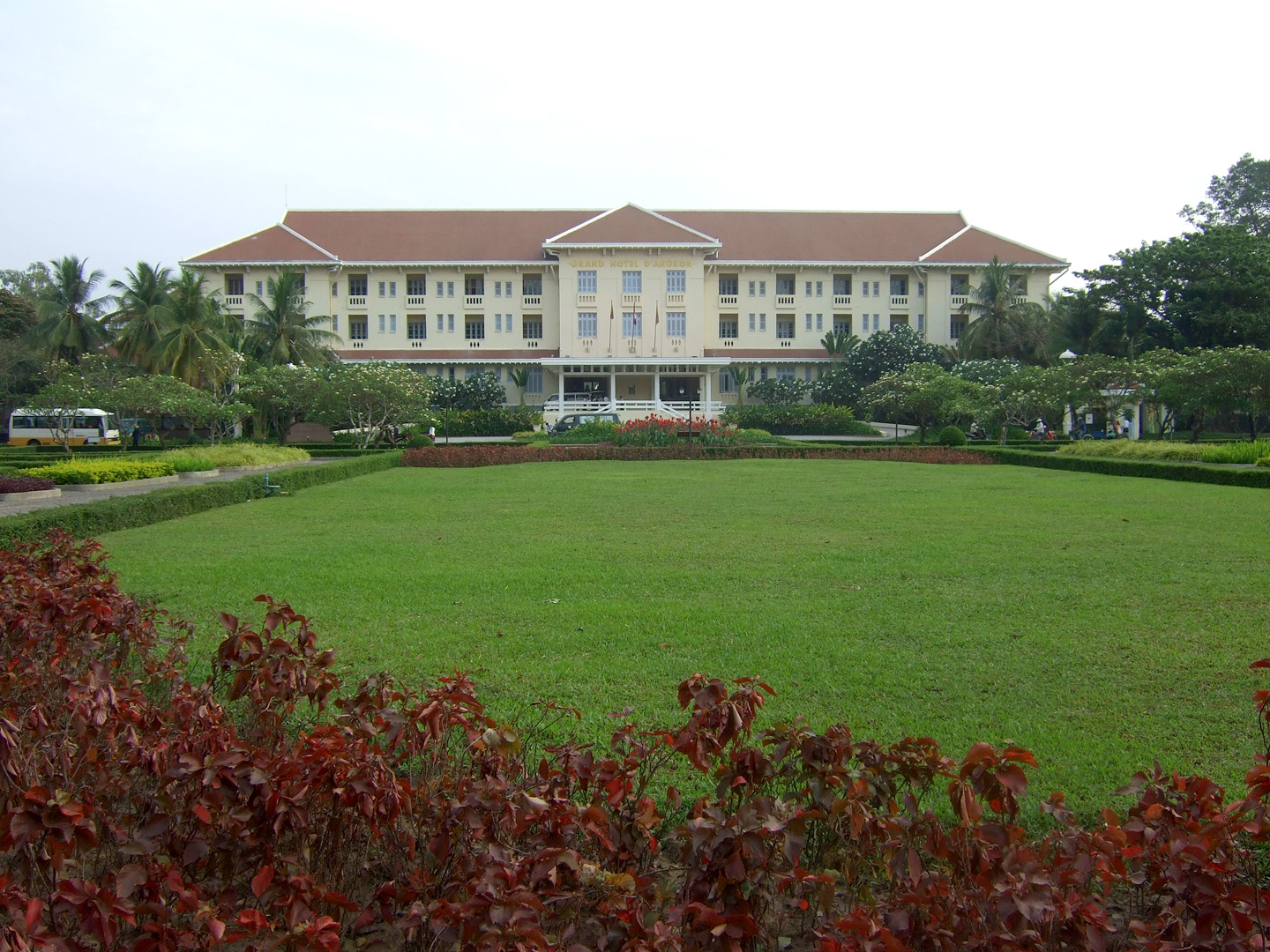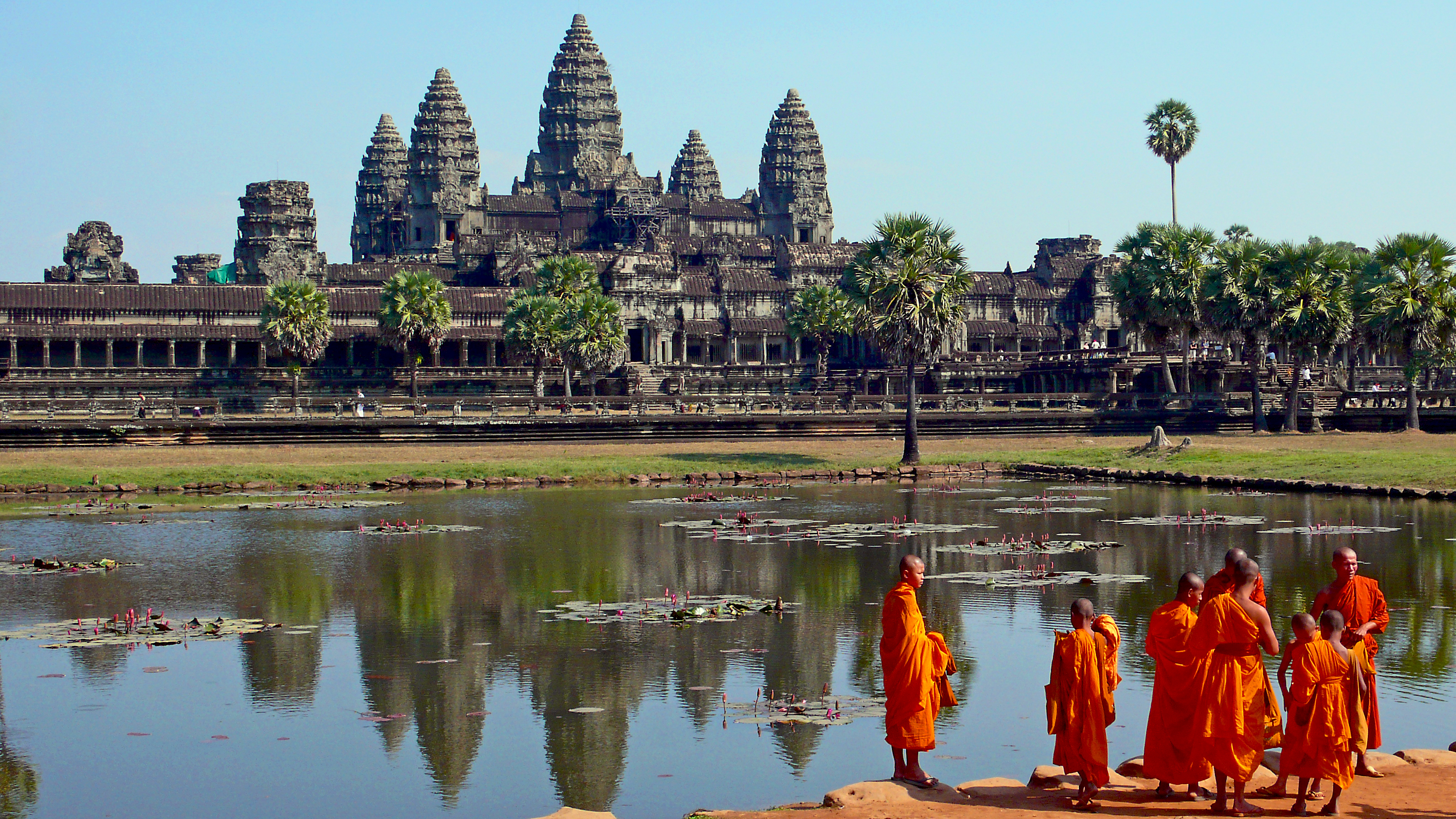
Street Scene in Siem Reap
Siem Reap has colonial and Chinese-style architecture in the Old French Quarter, and around the Old Market. In the city, there are traditional Apsara dance performances, craft shops, silk farms, rice-paddy countryside, fishing villages and a bird sanctuary near the Tonle Sap Lake.

Siem Reap, Battambang & Preah Vihear received by King Sisowath, 1907
Siem Reap today, being a popular tourist destination, has a large number of hotels and restaurants. Most smaller establishments are concentrated around the Old Market area, while more expensive hotels are located between Siem Reap-Angkor International Airport and the town along National Road 6. There are a variety of mid-range hotels and restaurants along Sivatha boulevard, and mid budget to mid-range hotels in the Phsar Leu area.

History
Siem Reap (Khmer: ក្រុងសៀមរាប) is the capital city of Siem Reap Province in northwestern Cambodia, and is the gateway to Angkor region.
The name Siem Reap means the 'Defeat of Siam' —today’s Thailand —and refers to a century-old bloodbath, commemorated in stone in the celebrated bas relief carvings of the monuments.
In 1901 the École Française d'Extrême Orient (EFEO) began a long association with Angkor by funding an expedition into Siam to the Bayon. The EFEO took responsibility for clearing and restoring the whole site. In the same year, the first tourists arrived in Angkor - an unprecedented 200 of them in three months. Angkor had been 'rescued' from the jungle and was assuming its place in the modern world.

Siem Reap was little more than a village when the first French explorers re-discovered Angkor in the 19th century. With the acquisition of Angkor by the French, in 1907, Siem Reap began to grow, absorbing the first wave of tourists.
Floating Village of Konpong Phluk
The Grand Hotel d'Angkor opened its doors in 1929 and the temples of Angkor remained one of Asia's leading draws until the late 1960s, luring visitors like Charlie Chaplin and Jackie Kennedy. In 1975, the population of Siem Reap, along with that of the rest of the cities and towns in Cambodia, was evacuated by the communist Khmer Rouge and driven into the countryside.
As with the rest of the country, Siem Reap's history (and the memories of its people) is coloured by spectre of the brutal Khmer Rouge Regime, though since Pol Pot's death in 1998, relative stability and a rejuvenated tourist industry have been important steps in an important, if tentative, journey forward to recovery. With the advent of war, Siem Reap entered a long slumber from which it only began to awake in the mid-1990s.
Palm trees in the countryside
Today, Siem Reap is undoubtedly Cambodia's fastest growing city and serves as a small charming gateway town to the world famous heritage site of the Angkor temples. Thanks to those attractions, Siem Reap has transformed itself into a major tourist hub.

Thommanon Temple
Siem Reap nowadays is a vibrant town with modern hotels and architectures. Despite international influences, Siem Reap and its people have conserved much of the town's image, culture and traditions.
You have read this articleCambodia
with the title Siem Reap in Cambodia. You can bookmark this page URL http://oinsweden.blogspot.com/2014/08/siem-reap-in-cambodia.html. Thanks!
Write by:
AN - Wednesday, August 6, 2014




















.jpg)

Comments "Siem Reap in Cambodia"
Post a Comment